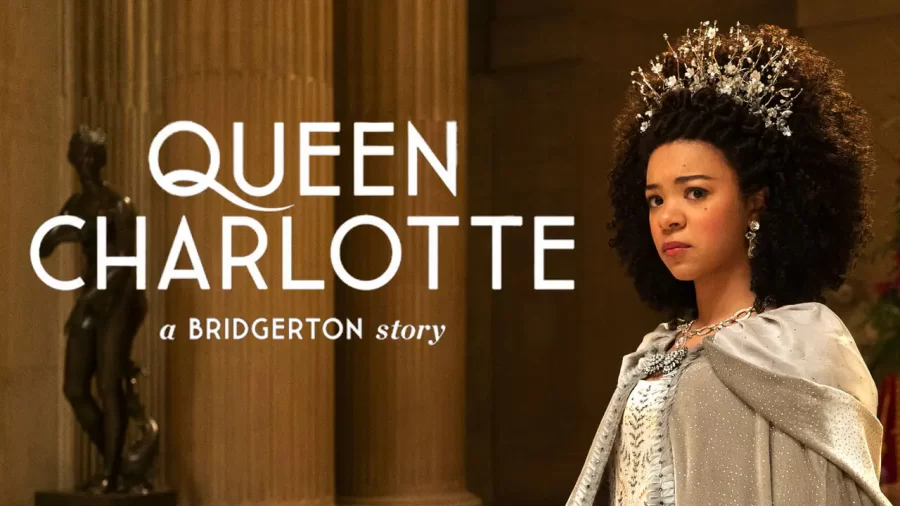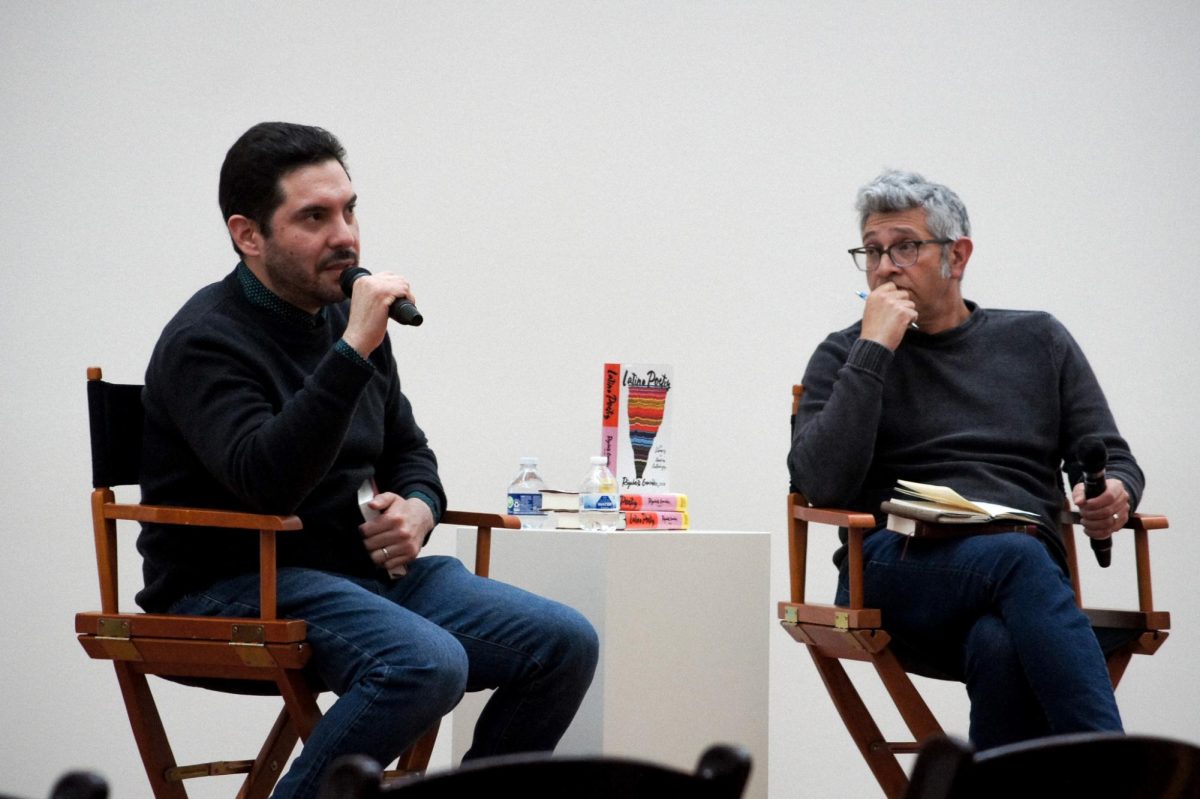‘Queen Charlotte’: A Strange but Enjoyable Series
June 5, 2023
Netflix’s “Queen Charlotte: A Bridgerton Story,” the latest addition to the now famous “Bridgerton” universe, has become one of Netflix’s most popular shows yet. The mini series allows audiences a sneak peak into the juvenile love lives of some of “Bridgerton’s” elder characters and sparks questions about romance and sexuality as we get older.
Historical Inaccuracies and their (Lack of) Consequence
I’ve found myself rather unwittingly enthralled by each season, and each respective love match, that “Bridgerton” has presented so far. While many have been put off by the historical anachronisms and flagrant sexuality that is so uncommon in period pieces (but is ever-present in shows by TV icon Shonda Rhimes), the classical covers of modern hits and very inaccurate but very beautiful clothing choices feel to me much more akin to Sofia Coppola‘s “Marie Antoinette” than Netflix’s “Persuasion” — by which I mean the decision to change history feels much more like a campy creative choice than an annoying error.
That being said, it was a little strange to realize that the love interest in “Queen Charlotte” was the same King George that ruled during the Revolutionary War. No one expects a series about young women learning what masturbation is to accurately portray an important historical figure and I found myself constantly distracted by the bizarre choice to not simply make up a fictional king.
The portrayal of King George’s mental illness was another distracting aspect. Though men putting themselves through hell to be good enough for their lovers may sound romantic in theory, the literal torture scenes were bizarre and not quite in good taste. It felt like a very outdated portrayal of mental health, out of touch with the current climate.
Moms Like to Have Sex Too!
That being said, “Queen Charlotte” was not entirely socially irresponsible. The original series rarely addressed the relative racial equality that exists in their AU London. However, “Queen Charlotte” confronts those issues head-on, dealing with colorism, generational wealth and the fight for equality.
The show simultaneously depicts the sexuality of mature women in a way that was admittedly a bit awkward but undoubtedly important. We are so used to seeing men over 40 years old being sexual, typically with much younger women. The same situation for women is nothing but taboo. “Queen Charlotte” allows the older female characters to express sexual desire. Violet Bridgerton and Lady Danbury (Ruth Gemmell and Adjoa Andoh respectively) depict sexuality past the supposed expiration date for women, and even after the passing of a beloved husband.
To Binge or Not to Binge
“Queen Charlotte” is a strange show. Though the casting of the younger versions of characters was nothing short of incredible, and there was some very good spice for those who enjoy it, the show was slow and came to an awkward end, largely due to the strange portrayal of real-world issues. If you enjoyed the other seasons, you’ll probably love it! But if you’re not already waiting for Colin and Penelope in season 3, you might want to sit this one out.












Donna • Jun 7, 2023 at 2:03 pm
Queen Charlotte has been the best TV I’ve watched in a long time. This realistic historical show was phenomenal!
The actors, set designs, the ethnic hair, the fashion of that time period (both men and women) and the music left you breathless and wanting more.
The ending was so profound it tore at your heartstrings. Thank you Shonda Rhimes.
The Damsel • Jun 6, 2023 at 8:24 am
The show was engaging, gut wrenching, thrilling and left you aching for more. You have to watch it, at the very least, twice. You are totally confused by King G’s behavior until episode 5 as it’s from The Queen’s perspective. The second review is from the King’s and now you grasp the depth of his complexity, his fear and your outlook changes completely. In history the real king actually endured cupping and gagging as part of his health protocol and the doctor did exist. How this king remained in power regardless of the fictional aspect, must give some credence to his Queen. She bore 15 children over a 21 year span. George to this day is the longest reigning male monarch in spite of his illness and presided over some of the most significant events in history! The show was thought provoking and magnificently portrayed. From the impeccable cast selection to it’s grandeur and allure of ” The great Experiment” initiating diversity and inclusivity. A winner all the way!. I vote this season as #1. Skipping it would be a great loss to artistic creativity.
Miss Lady V • Jun 5, 2023 at 8:36 pm
I loved Queen Charlotte. I think the casting was spot-on and the actors did a great job. I loved how vulnerability and strength were portrayed in all the characters. My favorite was the young Lady Danbury. I think it’s cool that she chose her independence, instead of being desperate to marry again. I also like the development of Queen Charlotte. She went from a young experienced woman to a strong, confident Queen. Excellent show! Kudos to Shonda Rhimes! I can’t wait for Bridgerton season 3!